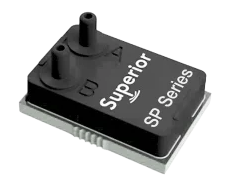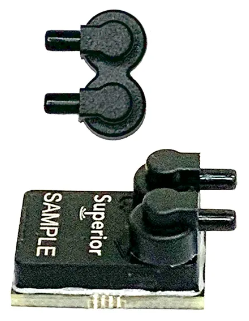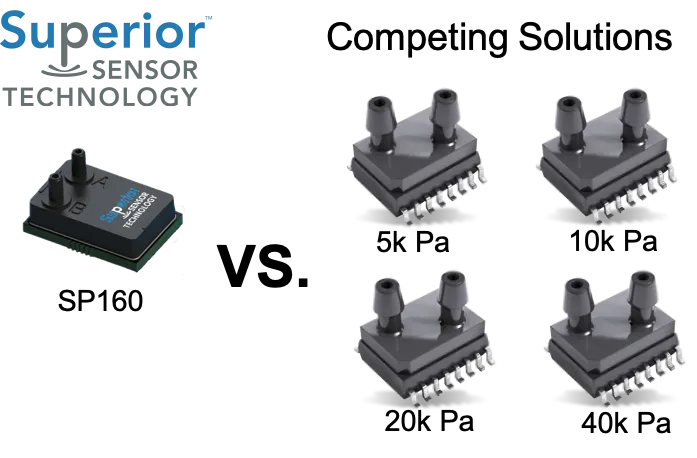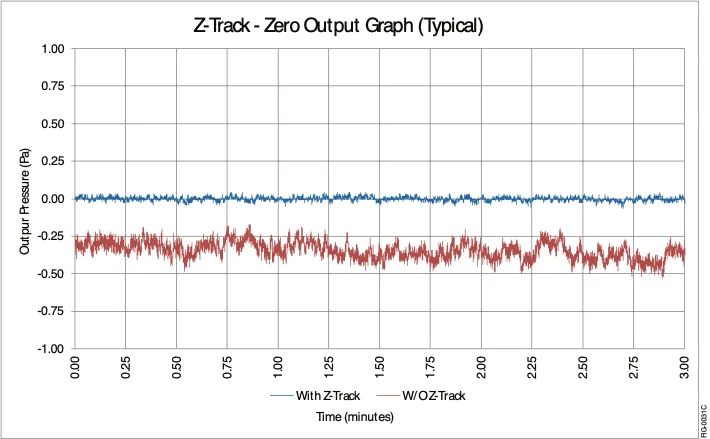The spirometer is a vital tool in pulmonary medicine. It diagnoses and treats numerous lung conditions. The spirometry device uses high-performance differential pressure sensors to precisely assess a patient's lung functioning.
These handheld devices must provide extremely accurate readings regardless of their orientation. Due to the unpredictable nature of sensor zero functionality, additional measurements are typically required to ensure reliable results.
Spirometry evaluates lung volume and capacity in a variety of testing scenarios. Among the most widely used measurements are:
- Forced Vital Capacity (FVC) – The maximum amount of air exhaled after taking the deepest breath
- Forced Expiratory Volume (FEV1) - The volume of air that can be exhaled in the first second of the forced expiratory volume
- Measurements include Peak Expiratory Flow (PEF), Maximum Voluntary Ventilation (MVV), Total Lung Capacity (TLC), and others.
For instance, the FVC and FEV1 values can detect a specific type of lung illness.
A low FEV1 score is a crucial sign to watch for Chronic Obstructive Pulmonary Disease (COPD) since it denotes an obstruction in the airflow leaving the lungs. Spirometry is believed to be the most accurate method for evaluating the lungs for COPD and asthma.
Spirometry testing also assesses the disease's severity and is used to confirm the effectiveness of a particular lung treatment.
SP Series Differential Pressure Sensors
Superior Sensor Technology has optimized the differential pressure sensors of the SP Series for use in spirometry and forced oscillation technique, or FOT. This product family offers a very distinctive and differentiating solution to meet the performance requirements:
- Enhanced auto-zero performance that almost eliminates the effects of zero drift by maintaining minimum zero-point variation utilizing the exclusive Z-TrackTM technology.
- Positionally insensitive devices maintain steady, extremely accurate handheld readings independent of the spirometer's physical orientation.
- The best-in-class sensor accuracy, total error band, and short-term zero stability guarantee consistently accurate Spirometry results, resulting in quicker and more precise patient diagnosis.
- Little warm-up time makes this a great option for time-sensitive applications.
- Low power usage aligns with the needs of the most advanced mobile devices.
Source: Superior Sensor Technology

SP Series – Differential Pressure Sensors with Z-Track
Features
- Dual sensors that are highly integrated with ADC and DSP
- With selectable pressure ranges ranging from ±250 Pa to ±40 kPa, Z-Track almost completely removes drift.
- Extremely low noise, effective resolution of 19 bits
- Exceptionally good accuracy ±0.1% of the chosen range
- Stability throughout the long run ±0.1% of FSS in the first year
- 500 Hz output update rate
- Adjustable bandwidth filter with a 25–250 Hz range
- Temperature-regulated between 0 °C and 50 °C
- Provide voltage correction
- Completely integrated compensation math
- SPI and I2C interface standards

Image Credit: Superior Sensor Technology
Engineering Design Resources
90° Port Adapters
Product design may require that the ports face the sides rather than the top. For simple installation, Superior provides incredibly dependable, premium adapters that fit into the two ports of pressure sensors. Z-height is not an issue when using these 90° adapters.
There are 90° adapters with and without o-rings available:
- KP-RAR: o-ring-free
- KP-ROR: featuring o-rings
There are packages of 50 and 1000 adapters available.

Image Credit: Superior Sensor Technology
Recommended NimbleSense Features for SP Series
Multi-Range Technology
A single device can accommodate up to eight distinct pressure ranges (from 250 Pa to 40 kPa for the SP Series); each range is factory-calibrated and tailored to maintain a constant total error band, accuracy, and stability.
This reduces the intricacy and difficulties involved in utilizing several sensors. Using a multi-range part simplifies the design and production processes by avoiding the need to find, acquire, and integrate many parts.
Pressure adjustments are readily controlled with a single software command, and efficiency and ease of use are improved using the same component in all designs. Multi-range also offers the simplicity of a single inventory item and additional value to manufacturing processes. To sum up, design and manufacturing teams equally recognize multi-range benefits.

Image Credit: Superior Sensor Technology
Benefits of Multi-Range Technology Include:
- Adaptability in design allows for pressure range adjustments during the development cycle.
- Streamlined product design by substituting one sensor for up to eight separate ones.
- The capacity to swiftly create product variations at various pressure levels without requiring modifications to the hardware design.
- Increased economies of scale from buying the same goods in bigger quantities lower manufacturing costs and complexity due to simpler sensor calibration.
- Reduced inventory expenses for sensors and product obsolescence by up to 4 times permit producers to create fewer product variations, greatly reducing the need for working capital and inventory.
Z-Track Technology
The company has created its exclusive Z-Track technology, which prevents zero drift and is a critical component of correct readings in medical equipment like spirometers. Z-Track improves spirometer accuracy, leading to more accurate diagnosis and improved treatment regimens.
Together with the Superior's position insensitivity feature, this technology ensures low zero-point deviation regardless of the time that has passed. As a result, the company's pressure sensors provide the most precise data for all kinds of spirometry equipment.
Z-Track technology ensures nearly error-free readings regardless of the spirometer's use or location. Z-Track ensures that all readings are accurate, dependable, and useful for making well-informed medical decisions. It also eliminates zero errors.
Benefits of Z-Track Technology include:
- Achieve zero errors to guarantee the industry's most accurate spirometer readings
- Maintain consistent performance throughout time
- The incredibly quick pace of data transfer
- Improved medical diagnosis and treatment strategies

Image Credit: Superior Sensor Technology